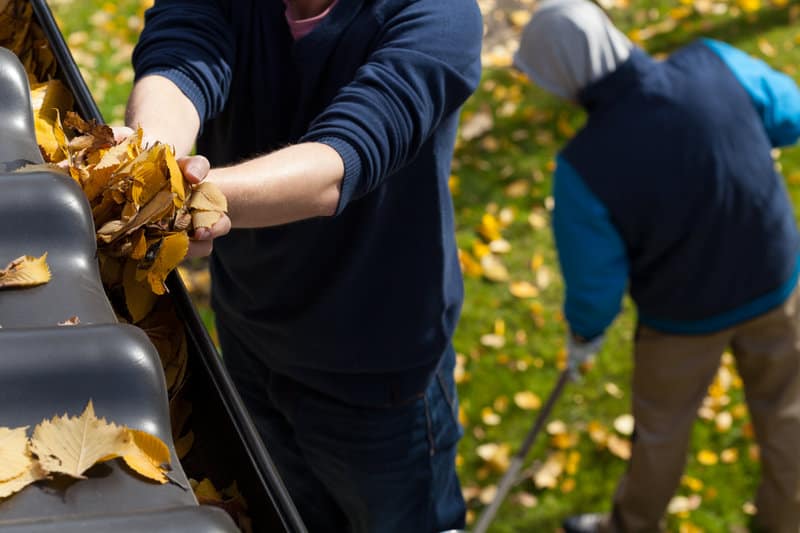
Roofing projects cost homeowners about $6,000 to $14,000. This investment can be in vain if you fail to maintain your roof properly.
So, when the winter’s ice starts melting away, you need to start thinking about spring cleaning your roof. Shingles take quite a toll from winter weather, especially in areas that experience heavy storms.
As such, you’ll need to clean the roof to ensure your home looks better and boost the lifespan of your roof.
Read on for the essential tips on how to conduct a spring roof clean-up:
Clean the Gutters
Your gutter system is the first thing you need to check. Typically, the condition of your gutters impacts the health of your roof. Weak and clogged gutters could lead to water overflowing. Usually, it’s necessary to clean the gutters at least twice a year.
Heavy snow during the winter usually damages the gutters while debris and leaves block them. You need to ensure that rainwater flows unobstructed and steadily to prevent possible damage to your foundation. Also, remember to flush your gutter before you clean to avoid blocking your downspout.
A hose is an ideal tool to use when cleaning your gutter. Make sure you flush your gutters again after cleaning.
Check for Damage
Cleaning your gutter doesn’t mean you have fixed every possible problem. Gutters are susceptible to wear and tear during the winter. This is usually common around the pipes, and you need to fix it before it leads to other issues.
Typically, the metal parts of your gutter are likely to rust. This will obviously affect the structural integrity of your gutter. If it’s something you can fix, use a wire brush to clean the area and apply a lubricant or paint. In some cases, you’ll need to replace the rusting parts.
Loose materials in your gutters and roof mean there will be moisture. Moisture accumulation could facilitate mold growth, and this will even hurt your roof structure more. Fungi and algae are also other problems you need to check during spring cleaning for your roof.
Moss and Mold Growth
Removing accumulated leaves and trimming your trees will help to reduce moss and mold growth. This is because it will allow the penetration of sunlight, which will heat away the moisture. Some people will opt to use chemicals to get rid of these issues once and for good.
The problem is that some of these chemicals are likely to damage some of your roof parts and plants. You can also add copper or zinc strips to the ridgeline to stave off any moss growth. Make sure all the discolored streaks on your roof are removed during the cleaning.
Some people also use copper sulfate solution or chlorine bleach with a garden sprayer to kill mold growth.
Check the Vents
If you have awkward numbers on your monthly bill, then there must be something wrong with your vents. Ventilation is essential in keeping your roof in excellent condition. After an adverse winter season, you are likely to experience issues, including condensation, and a damp basement.
These problems usually occur due to poor ventilation. Make sure you check the metal stripping around your chimney, vents, and ridge. Heavy storms are likely to loosen this stripping, and this means reduced ventilation for your home. In this case, replacing the stripping is the ideal solution.
Check Your Tree Limps
Tree limbs and branches hanging offer your roof pose several risks to your home and family members. During windy days, the limbs of trees scrape against the shingles of your roof, stripping off the layers of your gravel and asphalt.
The limps also may also mold growth and leaks when they fall on your roof or gutters. Heavy branches can also fall onto your roof, leading to costly damage. If your trees or your neighbors are hanging on your roof, it’s best to trim the branches before they damage your roof.
Trimming heavy limbs can also be a difficult and risky task. If it’s something you can’t handle, you need to speak to a roofing company or an arborist.
Roof Inspection
Now that your roof is clear, it’s easy to spot an issue that needs repair. Just use a ladder to access your roof and inspect for damaged areas on the flashing and missing shingles. Blistering winds and snow storms during the winter can lead to split, broken, or bent shingles.
A roof inspection will help you to catch and fix small repairs before they worsen. Keep in mind that some problems will lead to a leaky roof, which can cause damage to your interior and property. Common signs of roofing problems include:
- Peeling paint of the walls and underside of roof overhangs
- Damp spots near your fireplaces
- Dark spots on your ceilings
- Water stains
You can easily fix flashing problems around your attic vents, skylights, and chimneys with caulk. However, vent boots and flashing that is beginning to rust will need replacement.
Work with a Roofing Professional
Post-winter roof cleaning is vital for just about any homeowner who wants to ensure their roof is in good condition. In most cases, you’ll need to work with a licensed roofing service to inspect your roof, flashing, metal stripping, and gutters.
There are some issues that some homeowners overlook during spring cleaning only to pay heftily for them later. Heavy roofing repairs can be costly, especially when you didn’t anticipate them. Early fixes, such as replacing loose, missing, or damaged shingles, can help you save on repairs.
Take the time to find a roofing contractor that will help you prevent advanced roof problems.
Roof Spring Cleaning — The Takeaway
Spring cleaning may not be one of the things on your mind after the winter. Well, it might seem a trivial task for many, but it has lots of benefits. If you’re afraid of getting on your roof, contact a roofing professional to help you clean and inspect your roof and gutters.
Do you have any questions about roofing or cleaning your roof? Just reach out to us as we’re here to help.

